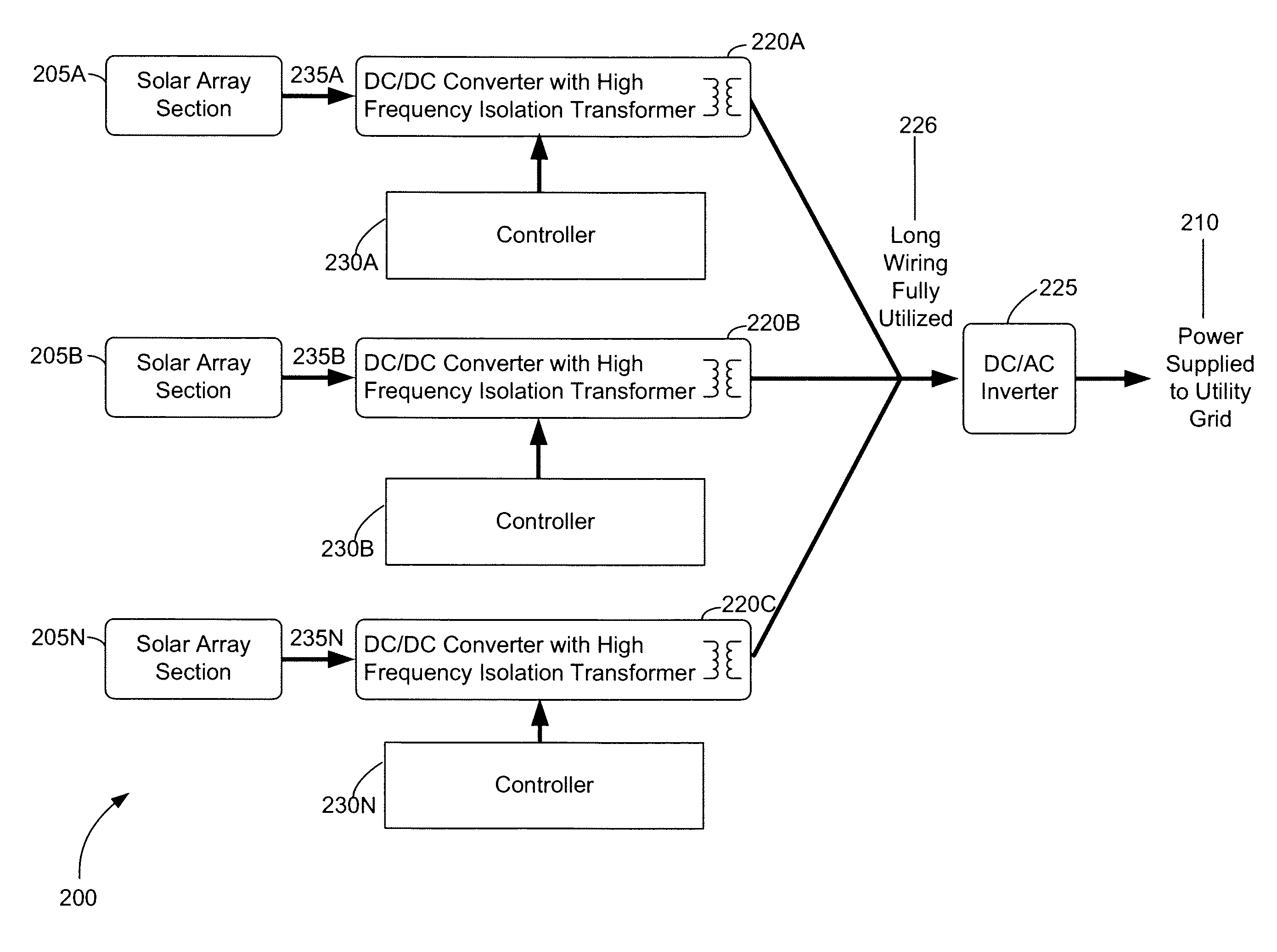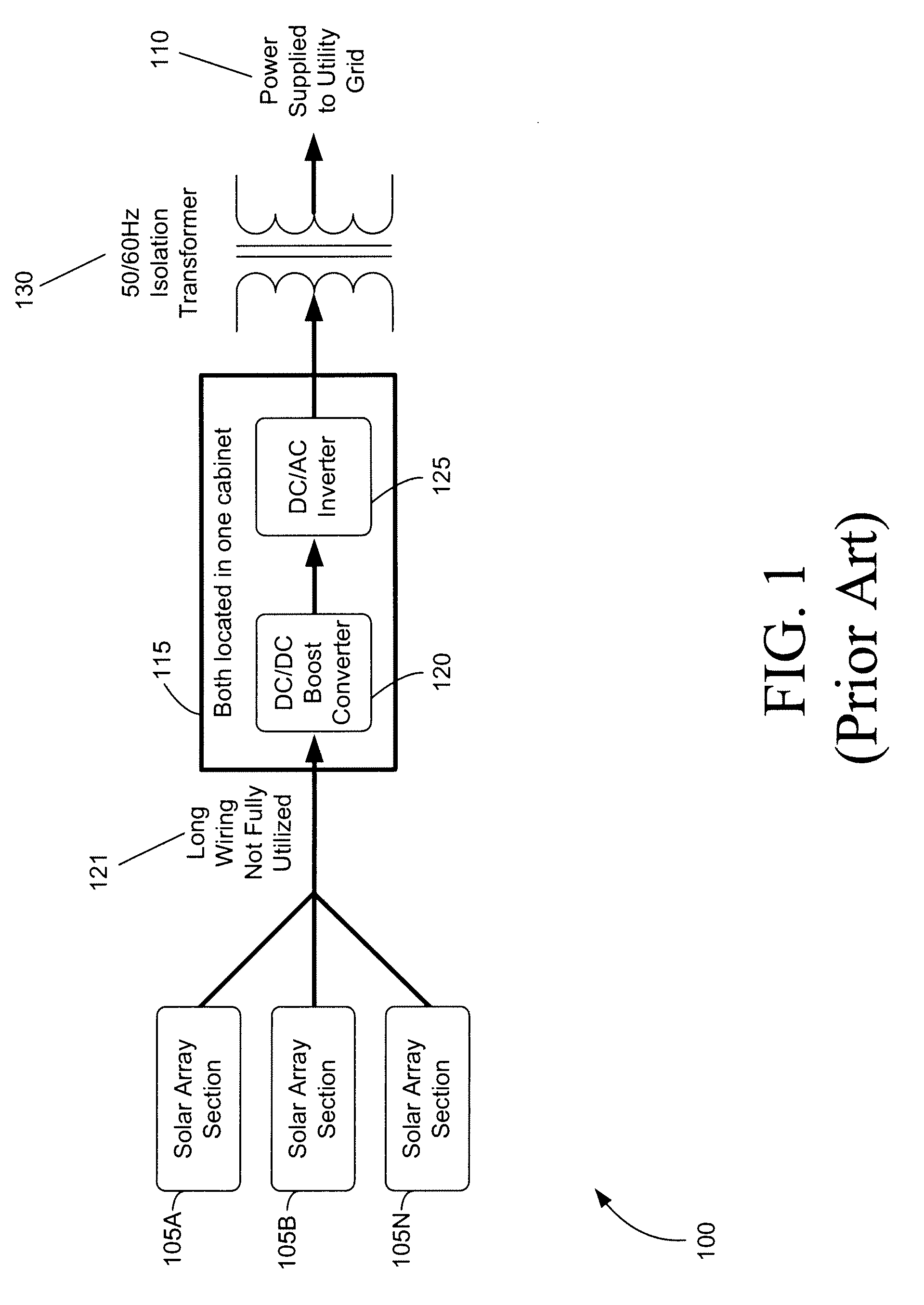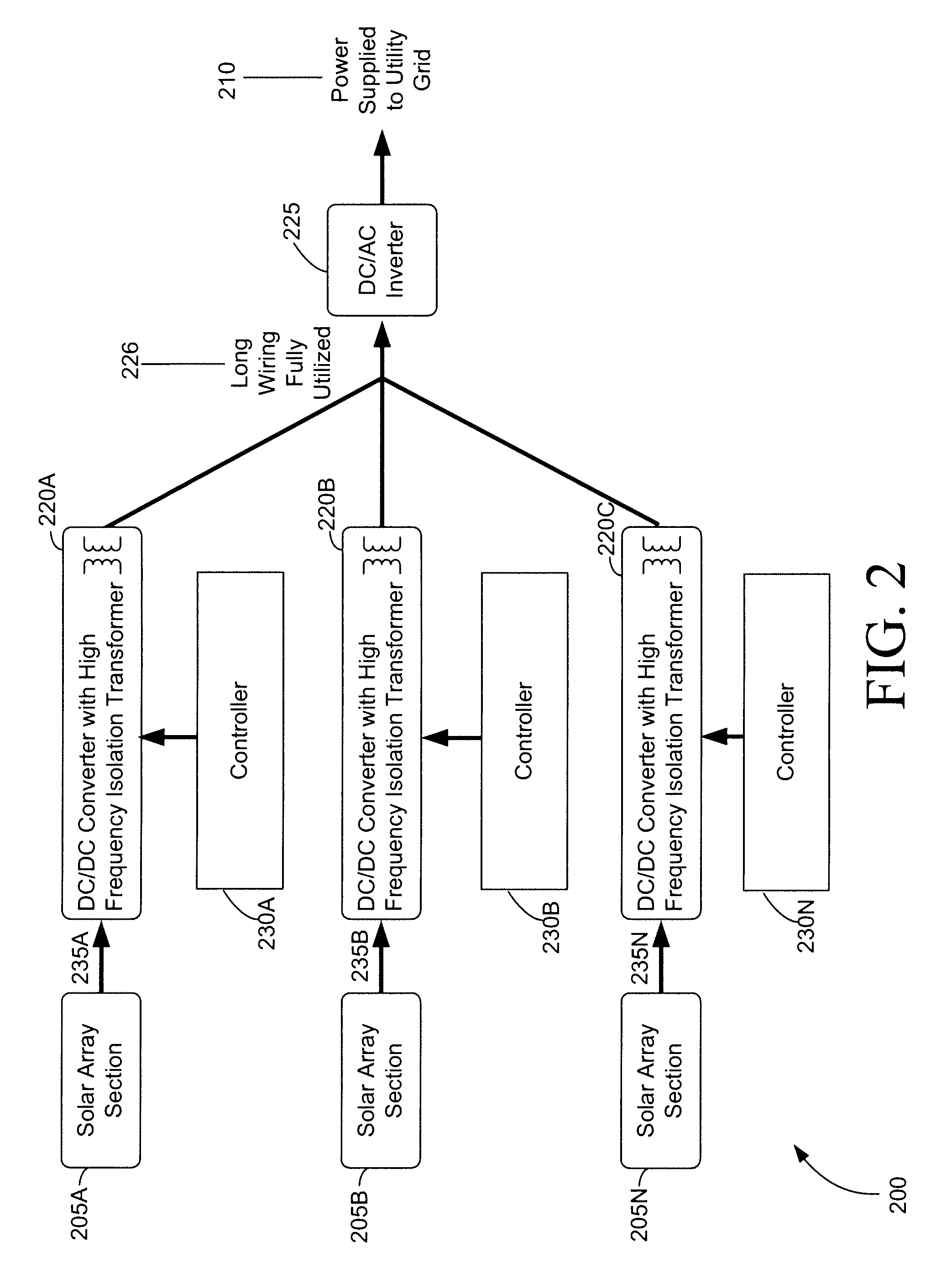Systems, Methods, and Apparatus for Converting DC Power to AC Power
a technology of converting dc power and ac power, applied in the direction of electrical apparatus, d ac network circuit arrangement, etc., can solve the problems of inconvenient operation, inconvenient maintenance, and inconvenient maintenance,
- Summary
- Abstract
- Description
- Claims
- Application Information
AI Technical Summary
Problems solved by technology
Method used
Image
Examples
Embodiment Construction
[0014]The invention now will be described more fully hereinafter with reference to the accompanying drawings, in which example embodiments of the invention are shown. This invention may, however, be embodied in many different forms and should not be construed as limited to the example embodiments set forth herein; rather, these embodiments are provided so that this disclosure will convey the scope of the invention to those skilled in the art. Like numbers refer to like elements throughout.
[0015]FIG. 1 illustrates a conventional DC-to-AC power conversion system 100 for converting direct current (DC) power to alternating current (AC) power. In conventional power conversion system 100, one or more solar array sections 105A-N can provide a source of DC power. The solar array sections 105A-N can be a linked collection of photovoltaic cells, which convert solar energy into DC power via a photovoltaic effect. Because the power produced by any individual cell is relatively low, photovoltaic...
PUM
 Login to View More
Login to View More Abstract
Description
Claims
Application Information
 Login to View More
Login to View More - R&D
- Intellectual Property
- Life Sciences
- Materials
- Tech Scout
- Unparalleled Data Quality
- Higher Quality Content
- 60% Fewer Hallucinations
Browse by: Latest US Patents, China's latest patents, Technical Efficacy Thesaurus, Application Domain, Technology Topic, Popular Technical Reports.
© 2025 PatSnap. All rights reserved.Legal|Privacy policy|Modern Slavery Act Transparency Statement|Sitemap|About US| Contact US: help@patsnap.com



